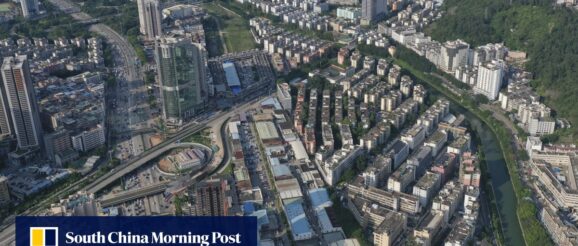China innovation hub Shenzhen poised to lead economic-rejuvenation drive with 55-point plan | South China Morning Post

It said it will upgrade its service industries and consolidate its manufacturing clusters, bringing them more into the global supply chain.
The city seeks to strengthen cooperation with Hong Kong and Macau in terms of laws, auditing and consultancy, and vowed to develop a modern service sector contributing more than 77 per cent of the total value of the service sector by 2025.
In 2021, this figure was 76.2 per cent, which is 12.4 percentage points higher than a decade ago, but it has grown by only 0.1 percentage points compared with 2020, according to government data.
Shenzhen also vowed to become an investment hub for multinational companies by offering foreign businesses more legal and policy support and tax relaxation.
“[We will] stabilise the market expectations of foreign enterprises in Shenzhen, guide foreign investment in key areas such as advanced manufacturing … and support the establishment of foreign-funded research institutions,” the document said.
28:19
What happens when China’s most-educated can’t find work
Shenzhen is also working to simplify visa processing for foreign talents and digital payment for overseas residents, according to the documents.
“The core thing Shenzhen needs for further development is to ensure the best possible business environment for its hi-tech industries,” said Peng Peng, executive chairman of the Guangdong Society of Reform.
“After all, Shenzhen is the one that has been hit hardest by trade protectionism and technology decoupling,” said Peng, adding that the best way for Shenzhen to shake off Washington’s siege is to transform into the best business environment in China.
Shenzhen needs to strengthen its integration with international rules and regulations, and fulfil its role as a “model and core engine” to drive China’s economy, according to Peng.
“The city should explore the path [of economic transformation] for the whole country,” Peng said.
Shenzhen will explore legal cooperation in the Guangdong-Hong Kong-Macau Greater Bay Area to turn into the main destination for foreign investors to resolve overseas commercial disputes.
Home to electric vehicle manufacturer BYD, Shenzhen also aims to promote the development of warehousing and airfreight business for lithium battery-containing cargoes, according to the documents.
As home to drone maker DJI, Shenzhen will explore legislation for future emerging industries, including the low-altitude space economy, according to the document.
In the first half of the year, Shenzhen’s gross domestic product grew by 6.3 per cent compared with the same period of last year, which was higher than Guangdong province’s 5 per cent and the country’s 5.5 per cent for the same period, according to government data.
